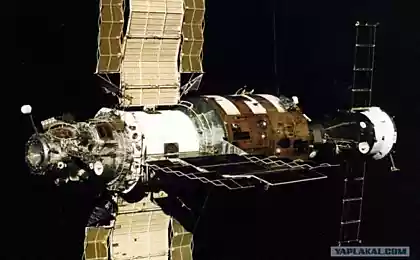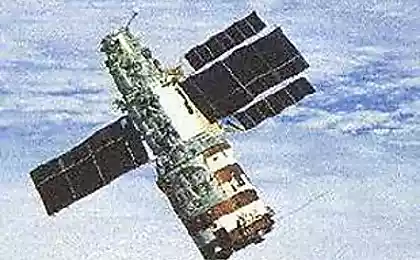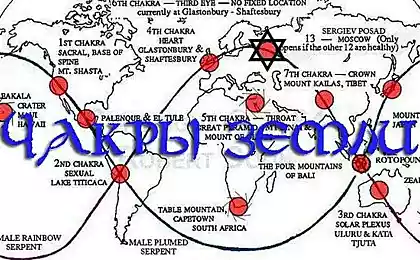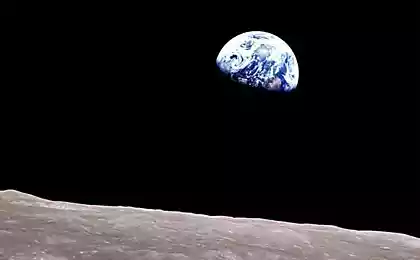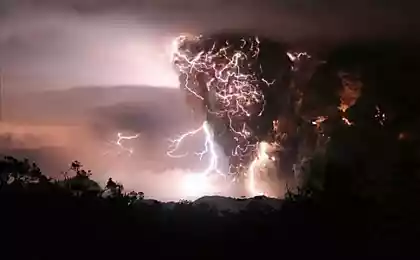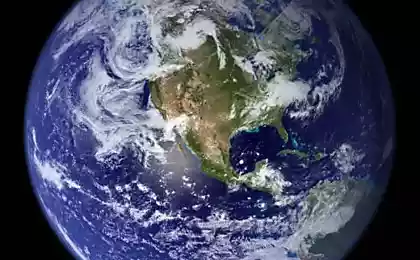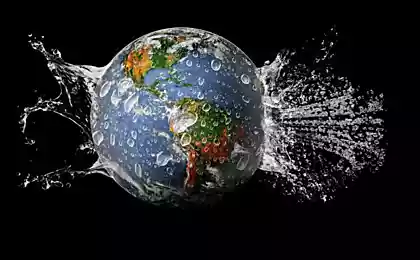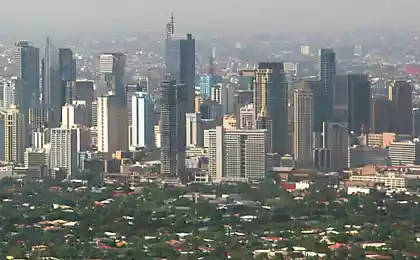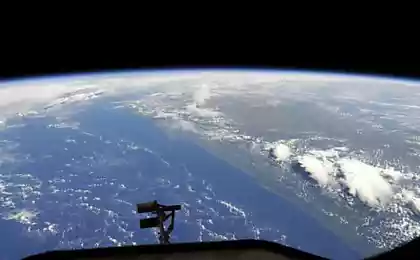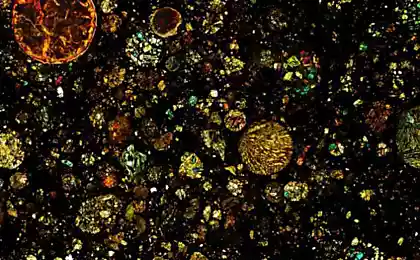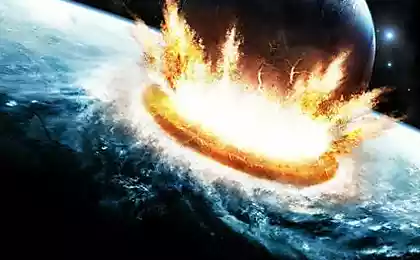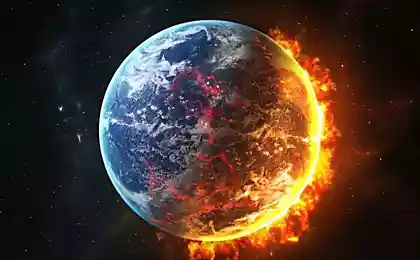573
The Earth's atmosphere is slowly losing oxygen

Troposphere — the bottom a very thin layer of atmosphere with height of 8-18 km, which accounted for 80% of the mass of the Earth's atmosphere
The importance of atmospheric O2 for the biological and geochemical processes on the Earth are extremely high. Therefore, scientists have long been studying how changing the oxygen content in the history of our planet. This can be understood from the calculation of the partial pressure of O2 and N2 in the total atmospheric pressure.
Despite the long history of the issue, from the experts there is still no consensus about changes in atmospheric pressure over the past 500 million years. The calculations differ by up to 0.2 bar (see figure below). Even in the last few million years no clear picture of exactly how varied was the atmospheric pressure, the partial pressure and hence concentration of O2.
A tough question, because oxygen from the atmosphere constantly consume animals, plants and even stones. A group of scientists from Princeton University, has clarified this question by examining the concentration of air bubbles in ice cores of Greenland and Antarctica.

Ice core from 1837 m depth with visible annual layers
To date ice cores — the most reliable and accurate source of information about the atmospheric pressure. The maximum age of the ice cores is 800 thousand years, so the study is limited to this time interval.

Extraction of ice cores at the scientific station "Vostok" in Antarctica
It turned out that during this time the Earth is fairly stable leak of oxygen at a speed of about 8.4 ppm in a million years. In particular, over the last 800 000 years in the atmosphere was about 0.7% less oxygen.
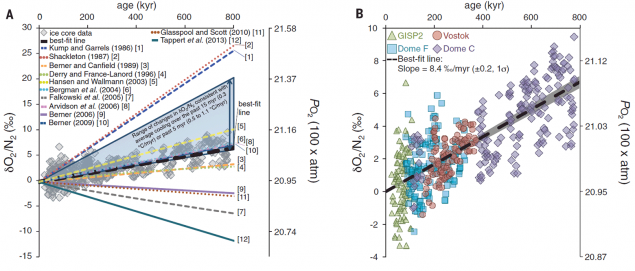
The diagram on the left shows how different the results of scientific modeling of the ratio O2/N2 in the atmosphere and partial pressure. The right chart the change in partial pressure by measuring air bubbles in ice cores, for 800 thousand years
"We've done these measurements is more of interest than to confirm the theory, said one of the authors of the scientific work of Daniel Stolper (Stolper, Daniel). — We didn't know what happened: the oxygen will increase, decrease or remain at a constant level".
Reducing the amount of oxygen in the atmosphere occurs rather slowly. Probably in the next millions of years it does not threaten human life. But information about the nature of such cycles are very important for science. We need to know under what influence factors is changing. This information can be used, including, when terraforming Mars, when people begin the colonization of the red planet. We may have to increase the amount of oxygen in the Martian atmosphere.
On Earth had no oxygen in the first couple billion years. The most probable theory, about 2.4 billion years ago oxygen levels rose sharply, thanks to the activity of cyanobacteria, also known as blue-green algae. This period of sharp change of the composition of the atmosphere with the subsequent restructuring of the global biosphere and the Huron glaciation in Earth's history known as the oxygen catastrophe.

Blue-green algae — the reason why 2.4 billion years ago appeared on Earth the oxygen in large quantities and there are more advanced life
The same oxygen catastrophe can be enjoyed on Mars.
Scientists have not yet come to a consensus, why the Earth's atmosphere is slowly losing oxygen. There are two hypotheses. One of them is happening because of the increase in the rate of erosion in which soil is removed more rocks that are oxidized and bind more oxygen. Another theory associated with climate change over the last few million years, the temperature decreased slightly, despite a sharp increase in recent decades. Due to the decrease in temperature could trigger a chain of ecological reactions that result in a higher level of oxygen began to dissolve and to communicate in the oceans.
While this is only a hypothesis that should be tested.
At the moment the Earth's atmosphere contains 78,09% nitrogen, 20,95% oxygen, 0,93% argon, 0,039% carbon dioxide and small quantities of other gases. It also constantly changes the concentration of water vapor, which is considered one of the main greenhouse gases. At the level of the ocean, the concentration of H2O in the atmosphere is about 1%, and an average of about 0.4%. The total mass of the atmosphere is 5.5×1018 kg, ie 5.5 or 5.5 tetragrammon Patton.

The accumulation of oxygen in Earth's atmosphere. The green graph is a lower bound for the oxygen level, red — top score. 1. A 3.85-2.45 billion years ago. 2. Of 2.45 to 1.85 billion years ago: start of production of oxygen and its absorption by the ocean and the rocks of the seabed. 3. Of 1.85-0.85 billion years ago: oxidation of rocks on land. 4. Of 0.85 to 0.54 billion years ago all the rocks on land, oxidized, begins the accumulation of oxygen in the atmosphere. 5. 0.54 billion years ago — present
Leakage of oxygen from earth's atmosphere is slow. But scientists emphasize that in their study no data on changes in the level of oxygen over the past 200 years, after the start of the Industrial revolution, when people started to oxidize hydrocarbons from the earth, receiving energy from this chemical reaction and binding large amounts of oxygen from the atmosphere. "We consume oxygen is a thousand times more than before, says Daniel Stolper. — Humanity is completely closed [oxygen] cycle, burning thousands of tons of carbon... This is further evidence that together people are able to greatly accelerate the natural processes on Earth."
Scientific paper published on 23 September 2016 in the journal Science (doi: 10.1126/science.aaf5445).
https://www.slideshare.net/slideshow/embed_code/key/aitFzEagqIvsVN
Source: geektimes.ru/post/280810/
Copper axe of ancient man, ötzi came to the Alps from Central Italy
Physics in the world of animals: woodpecker and his "jackhammer"
